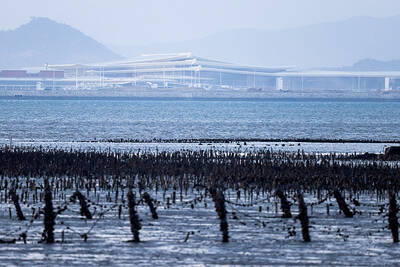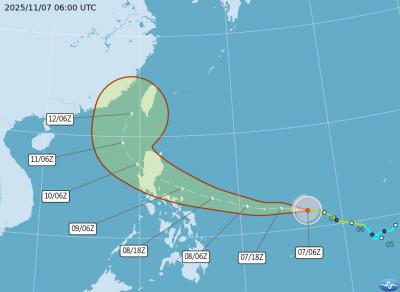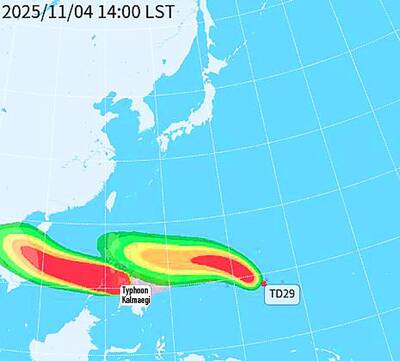A new study by a China security expert at the US National Defense University cautioned that there might be a distinct downside to deeper cross-strait rapprochement between Taiwan and China.
Closer ties between the two sides could raise the prospect of “fundamental changes in China’s security challenges,” its author Michael Glosny said.
Glosny said that while other countries would be relieved by the rapprochement, many would also worry that a rising China no longer constrained by a focus on Taiwan would use its increased power to “challenge their interests elsewhere in Asia.”
“Former US Ambassador to China James Lilley referred to Taiwan as ‘the cork in China’s bottle,’” Glosny wrote. “Deeper rapprochement will remove the cork, freeing resources devoted to military preparation for Taiwan contingencies and giving the People’s Liberation Army [PLA] new options.”
The study, Getting Beyond Taiwan — Chinese Foreign Policy and PLA Modernization, just released by the Institute for National Strategic Studies, says that since the mid-1990s, China’s military modernization has focused on deterring Taiwanese independence and preparing for a military response if deterrence fails.
Given China’s assumption of US intervention in a conflict over Taiwan, the PLA has been developing military capabilities to deter, delay and disrupt US military support operations.
“The 2008 election of Taiwan President Ma Ying-jeou (馬英九) has contributed to improved cross-strait economic and political cooperation and dramatically reduced the threat of Taiwan independence and war across the Taiwan Strait,” Glosny wrote.
Deeper rapprochement over the next five to 10 years would clearly be a positive development — removing the most likely source of war between the US and China, he said.
However, at the same time it would leave China free to “turn its attention” to other countries in the region.
“If China was no longer constrained by its focus on Taiwan, it could undermine regional stability. Maritime Southeast Asian states would worry that China might seize the Spratly Islands ... China might try to seize the Senkaku/Diaoyutai Islands or aggressively challenge Japan’s exclusive economic zone claims,” Glosny wrote.
“India would worry that China might take a tougher stance on unresolved land border disputes. Russia would fear that an unrestrained China could mount an aggressive move into the Russian Far East, both to reclaim territory and to try to seize energy resources in Siberia,” he added.
The study said that to date, countries in the region had been reluctant to pressure China to explain its skyrocketing defense budget and defense modernization plans.
“The removal of the Taiwan issue will make regional countries more likely to demand such explanations, as well as greater military transparency,” Glosny wrote. “This is likely to make China’s relations with its neighbors more acrimonious and make it more difficult to reassure them that it has peaceful and cooperative intentions.”
If the US reacts by strengthening defense ties with Asian countries, China could “unleash spirals of hostility,” the study said.
But if, on the other hand, the US reduces its presence in Asia, it could “lead to an independent Japan that acquires nuclear weapons and devotes more resources to military modernization,” it said.
“Regional powers, even without cooperation with Washington, are powerful enough to complicate China’s international environment, especially if they work together to prevent China’s dominance,” it said.
Nor will smooth relations across the Strait necessarily ensure better US-China relations.
“Shifting power dynamics often lead to friction, competition, and conflict,” the study said.
“American leaders would worry that China might try not only to drive US forces away from China’s coastal waters, but also to push the US out of East Asia. China might also devote significant resources to wage a global battle for military and political influence around the world,” he said.
“For Asia and the US, deeper rapprochement across the Strait will remove one major problem but will add a new layer of apprehension and concern about China’s future behavior on top of the existing uncertainties,” he said.

UNILATERAL MOVES: Officials have raised concerns that Beijing could try to exert economic control over Kinmen in a key development plan next year The Civil Aviation Administration (CAA) yesterday said that China has so far failed to provide any information about a new airport expected to open next year that is less than 10km from a Taiwanese airport, raising flight safety concerns. Xiamen Xiangan International Airport is only about 3km at its closest point from the islands in Kinmen County — the scene of on-off fighting during the Cold War — and construction work can be seen and heard clearly from the Taiwan side. In a written statement sent to Reuters, the CAA said that airports close to each other need detailed advanced

Tropical Storm Fung-Wong would likely strengthen into a typhoon later today as it continues moving westward across the Pacific before heading in Taiwan’s direction next week, the Central Weather Administration (CWA) said. As of 8am, Fung-Wong was about 2,190km east-southeast of Cape Oluanpi (鵝鑾鼻), Taiwan’s southernmost point, moving westward at 25kph and possibly accelerating to 31kph, CWA data showed. The tropical storm is currently over waters east of the Philippines and still far from Taiwan, CWA forecaster Tseng Chao-cheng (曾昭誠) said, adding that it could likely strengthen into a typhoon later in the day. It is forecast to reach the South China Sea

WEATHER Typhoon forming: CWA A tropical depression is expected to form into a typhoon as early as today, the Central Weather Administration (CWA) said yesterday, adding that the storm’s path remains uncertain. Before the weekend, it would move toward the Philippines, the agency said. Some time around Monday next week, it might reach a turning point, either veering north toward waters east of Taiwan or continuing westward across the Philippines, the CWA said. Meanwhile, the eye of Typhoon Kalmaegi was 1,310km south-southeast of Oluanpi (鵝鑾鼻), Taiwan’s southernmost point, as of 2am yesterday, it said. The storm is forecast to move through central

Almost a quarter of volunteer soldiers who signed up from 2021 to last year have sought early discharge, the Legislative Yuan’s Budget Center said in a report. The report said that 12,884 of 52,674 people who volunteered in the period had sought an early exit from the military, returning NT$895.96 million (US$28.86 million) to the government. In 2021, there was a 105.34 percent rise in the volunteer recruitment rate, but the number has steadily declined since then, missing recruitment targets, the Chinese-language United Daily News said, citing the report. In 2021, only 521 volunteers dropped out of the military, the report said, citing